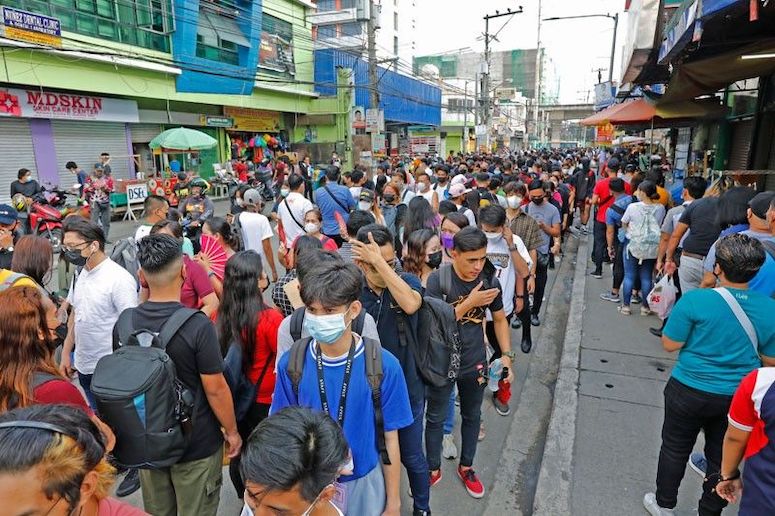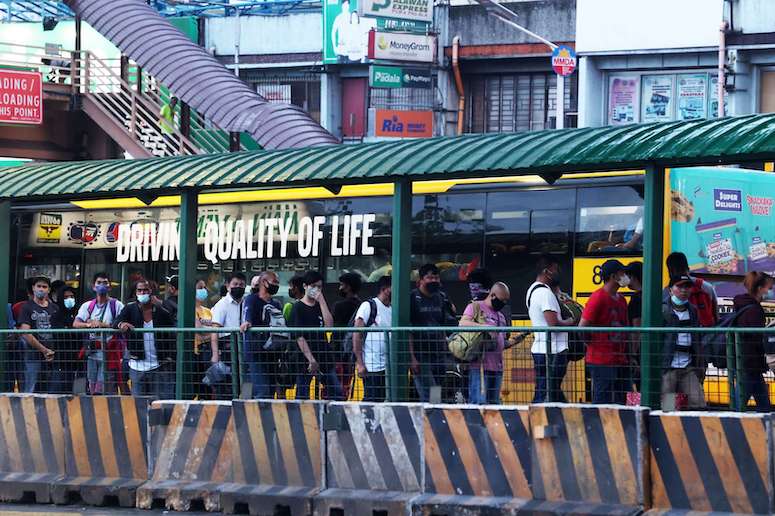PUV 'standing ovation': Surviving travel via sardine cans on wheels
Long before Covid-19 infected not only humans, but life as we know it, sightseeing across the city by bus, jeepneys, and later the light rails, was something I happily looked forward to.
As a writer of fiction in my younger years, riding public utility buses and jeeps taught me a lot of things about human behavior, more so at night. It was only after I was robbed by armed thieves inside a jeepney that I opted to take a taxi.
That was eons ago, it seems, before public transportation suffered near-death experience and eventually died, only to turn into a zombie-like state hankering for brains.
Apparently, there is not enough grey matter in our transportation agencies that could come up with a long-term solution to the congestion in our streets. Save perhaps Sen. Robin Padilla’s proposal to run a cable car system across the city. Problem is, traversing miles and miles of electric and telephone wires would naturally require a top-of-the-line (pun, intended) circus act.
Let’s look at it from the bright side: getting caught in a cable car in one of the country’s freak thunderstorms, with winds blowing an updraft of 70 mph, and at a height of, say, 200-300 meters, will force people to get life insurance.

And so, the next “best” thing was recently proposed: a certain number of passengers would be allowed to stand inside selected public utility buses (PUB) as per the Land Transportation Franchising and Regulatory Board’s (LTFRB’s) Memorandum Circular No. 2022-070:
- Low-Entry/Low Floor PUB – a maximum of Fifteen (15) standing passengers will be allowed, at least one-person apart;
- Coach-type PUB – a maximum of Ten (10) standing passengers will be allowed, at least one-person apart;
- MPUJ Class 2 – a maximum of Five (5) standing passengers will be allowed, at least one-person apart.
“Imposed existing policies on minimum public health protocols inside PUVs shall be strictly observed at all times. Failure to comply with this MC shall be considered as a violation of the terms and conditions of their CPC, and appropriate penalties shall be imposed against the operator under the provisions of Joint Administrative Order No. 2014-01.”
Road congestion is a clear dissonance in government’s idea of public transportation. That it is impaired, in fact, is the least of our more serious concerns. The real problem is that our efforts to solve our daily snags desperately lack a wholistic approach. There ought to be a synchronized design if we were to actually solve this.

You know what they say about arteries clogging up: it’s only a matter of time before the city suffers a serious cardiovascular accident from which there can be no recuperation.
The city and provincial road system is a key part of the country’s bloodline. Our economy’s life is literally dependent on delivery and freight services nowadays, to say little of public transport conditions that are the source of our proverbial stress.
Based on figures released by the Japan International Cooperation Agency (JICA) in 2018, roughly P3.5 billion a day is lost to congested Metro Manila streets. This could escalate to P5.4 billion in 2035, if and when this is not addressed.
That’s a lot of moolah that an already convulsing economy can hardly afford. With the dollar-peso exchange rate about to reach P60-$1, it is safe to assume that our losses could reach tens of billions in a short amount of time. That’s discounting a health problem that already posted an unemployment rate of 6.4% early this year.

Allowing standing passengers in PUBs could only exacerbate an economic cost that could reach a staggering P41 trillion in four decades. That’s a little over P1 trillion a year, and a fifth of our national budget.
“You cannot understand a city without using its public transportation system,” says Dr. Erol Ozan, professor of information technology at East Carolina University.
Let’s face it, this city has fallen into near disrepair – ugly is the very essence of it – leaving only those who could afford private cars the indulgence of stress-free travel. The rest of the poor and disenfranchised will have to contend with surviving the war zone.
I strongly suggest consulting our drivers and riding public with whatever effort is needed to draft a blueprint. The pulse of the streets runs in their veins, more than enough to give crisis managers a bigger picture. We also need a vision of the problem from the ground up, bearing in mind not only its economic cost, but its immediate social and political implications.
The city and provincial road system is a key part of the country’s bloodline. Our economy’s life is literally dependent on delivery and freight services nowadays, to say little of public transport conditions that are the source of our proverbial stress.
Solving the problem in the least amount of time could cost the nation an arm and a leg. Throw in a couple of fingers and toes. Our crisis managers will have to work around what is already in place, which is not exactly an easy thing to do. But given the resources needed, barring corruption, there’s a good chance that we would resolve this in the near future.
And maybe, just maybe, some of them can think of resurrecting the train complete with ultra-modern amenities, sufficient for both the poor and the rich to take public transport.
Because the latter is the sign that we have done well for ourselves.


